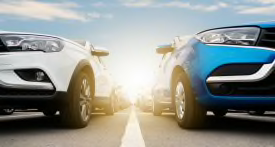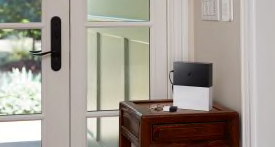The Kia Forte brings simple controls, impressive fuel economy and a respectable list of standard advanced safety features. But while at one time is was one of the better affordable cars, the current model has regressed to basic transportation. It suffers from a stiff ride and its cabin is extremely loud even by the category’s modest standards.
The Forte’s engine pulls adequately around town, and the continuously variable transmission (CVT) does a good job simulating the feel of a conventional automatic transmission. In addition, acceleration has improved, and the Forte is quicker than the previous generation. Finally, fuel economy improved to 34 mpg overall, which is among the best in the class.
We found the Forte has responsive handling that makes it more agile than its predecessor. It willingly responds to steering inputs, and boosts driver confidence on twisty roads.
But this newfound handling prowess isn’t worth the accompanying loss in ride quality. The ride is overly stiff, and practically transmits every road bump, seam, and pothole to the cabin’s occupants. Noise isolation is not the car’s forte either, due to the raucous engine and constant road noise.
The front seats are basic and short on lower back support, which exacerbates the impacts from the stiff suspension. Buyers who are interested in the Forte should consider the GT-Line or GT trims, which can be had with more comfortable power-adjustable seats and adjustable lumbar support.
The rear seat is livable and typical for a compact sedan. The trunk can swallow a good deal of luggage. Unfortunately, there is no external trunk release aside from the key fob.
As is the case with most Kias, the controls are simple to interpret and operate, and the switches and knobs are logically clustered. The infotainment touchscreen is very easy to reach and use. We also appreciate the standard automatic climate control system.
However, the mid-trim LXS we tested does not have keyless entry and push-button start, as many cars in its class have. Instead, it uses an old-school key fob to unlock the car’s doors, but drivers must twist a key in the ignition to start it—which is anachronistic. Plus, the fob is tricky to use, with tiny chromed buttons running down the side.
The Forte comes standard with forward collision warning, automatic emergency braking, lane departure warning, and lane keeping assistance. Blind spot warning is optional. The Forte also has a rudimentary system that alerts drivers when they’re not paying enough attention.
We can't help think that the Forte takes a step back from its more pleasant predecessor. There is no shortage of better choices.


























